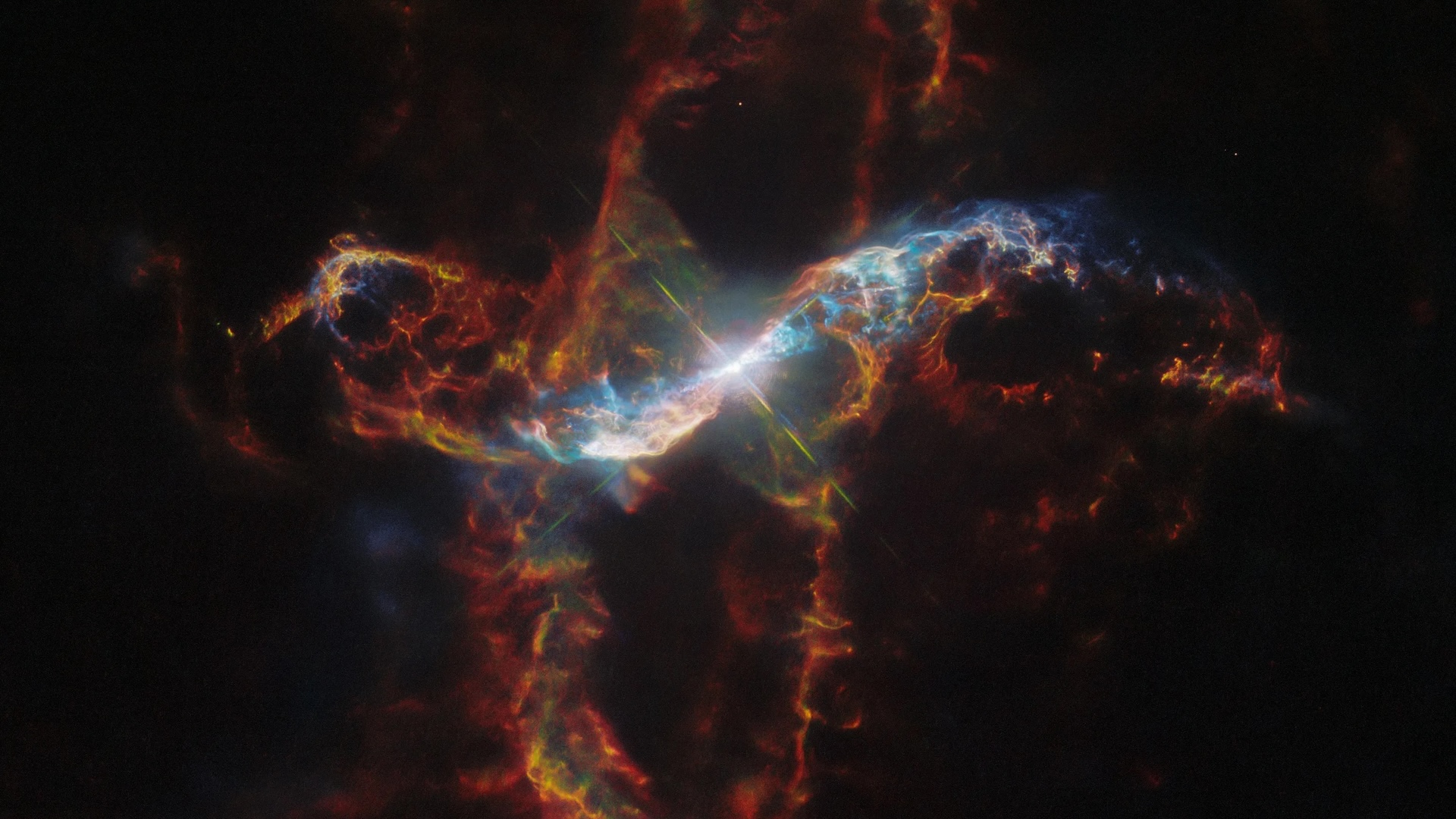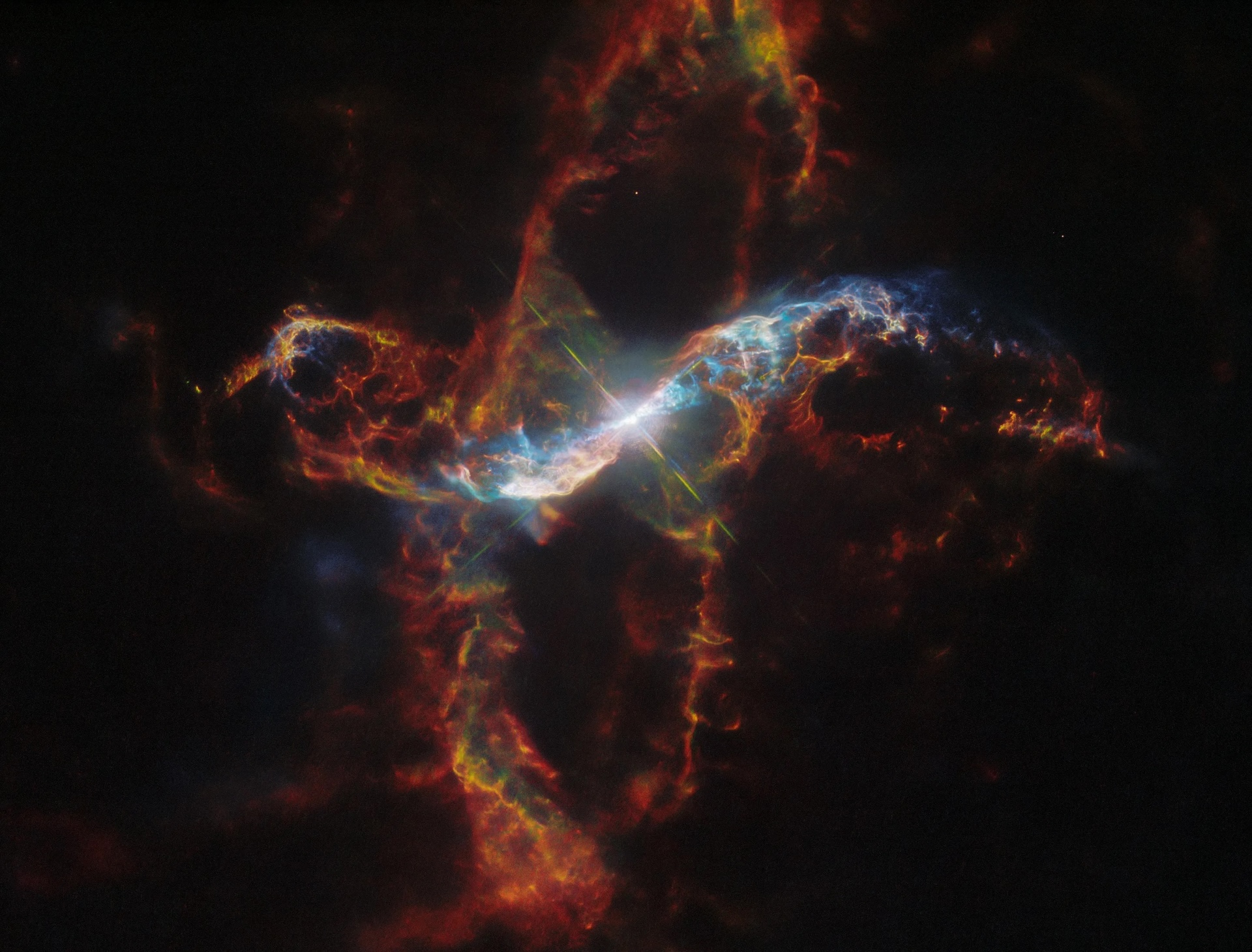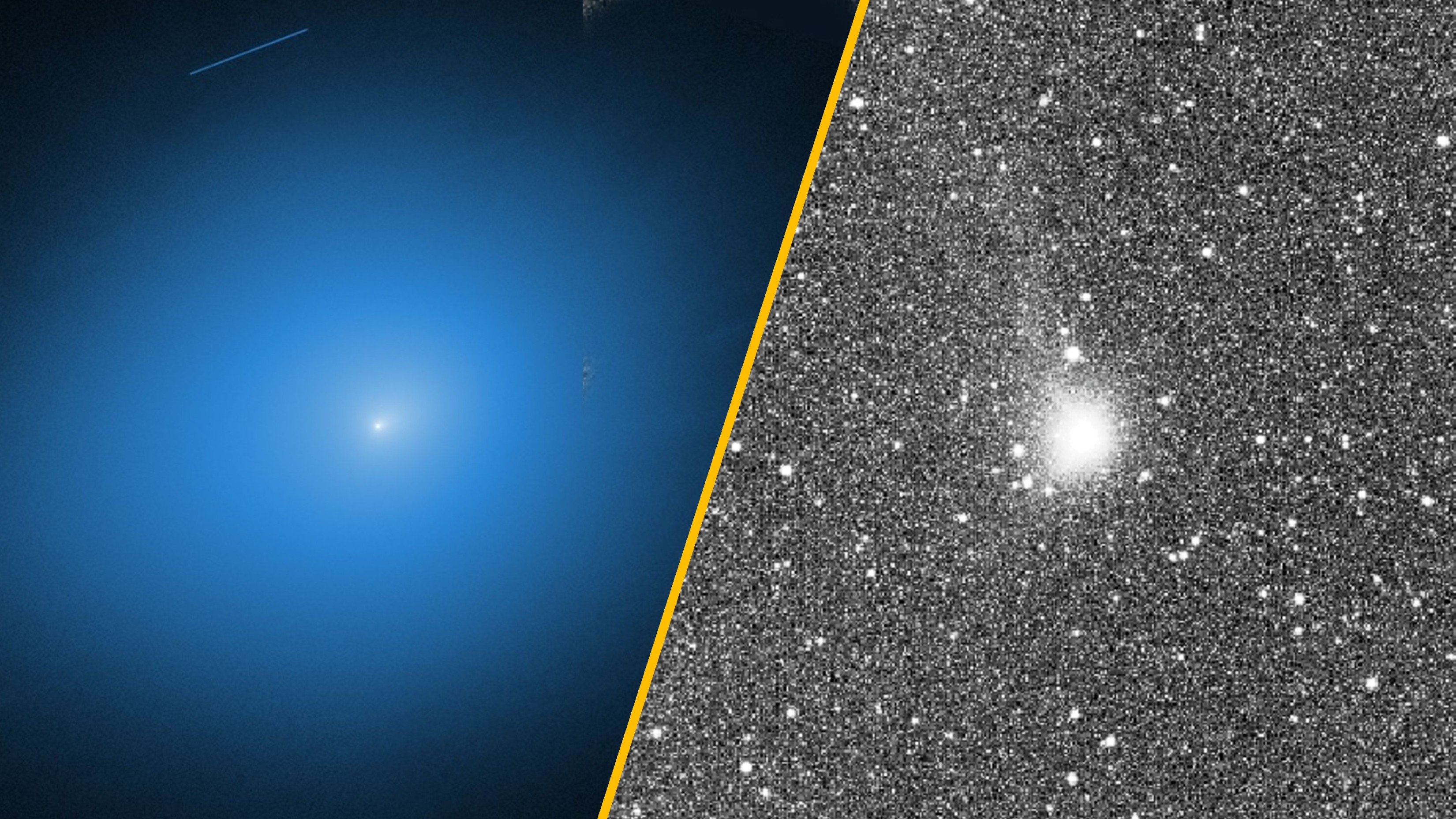Space photo of the week: Hubble spots a stellar 'H-bomb' exploding in Aquarius at 1 million mph
A pulsating red star and its spectacular nebula have been captured by NASA's Hubble Space Telescope.

What it is: The variable binary star R Aquarii and the Cederblad 211 nebula
Where it is: 710 light-years away, in the constellation Aquarius
When it was shared: Oct. 16, 2024
Why it's so special: Not all stars in the night sky are what they seem. Take R Aquarii, a point of light roughly between where Saturn and Jupiter appear in the sky right now. It's two stars, not one. That's not unusual. According to Space.com, around 85% of stars exist in binary star systems. R Aquarii consists of a massive, cool red giant star and a dense, compact, hot white dwarf star. The two stars have a violent relationship going back centuries.
Their interaction has caused the red giant star, which is about 400 times larger than the sun, to dim and brighten over 390 Earth days. During that time, it varies in brightness by a factor of 750, peaking at 5,000 times the sun's brightness and changing temperature.
Related: 38 jaw-dropping James Webb Space Telescope images
Astronomers call it a variable star, but R Aquarii is also a symbiotic star. The reason for the slow blink is an explosion on the surface of the white dwarf. Hydrogen builds up on the hot surface of the white dwarf until it inevitably ignites after spontaneous nuclear fusion, causing an explosive outburst of glowing gas. It does that when the two stars are close to each other, which happens roughly every 44 years.
Get the world’s most fascinating discoveries delivered straight to your inbox.

That hydrogen-bomb-like event is called a nova. A similar event likely created the colorful nebula, called Cederblad 211, around R Aquarii, whose filaments blast from both ends of the star system and reach over 248 billion miles (400 billion kilometers) into space. During an outburst, plasma filaments shoot outward at more than 1 million mph (1.6 million km/h) and become sculpted into spirals by strong magnetic fields.
In addition to this beautiful image of R Aquarii and Cederblad 211 from the Hubble Space Telescope, a time-lapse video was created using five images taken from 2014 to 2023. The video shows the system's brightness changing over time, offering a great example of a technique known as time-domain astronomy.
For more sublime space images, check out our Space Photo of the Week archives.

Jamie Carter is a freelance journalist and regular Live Science contributor based in Cardiff, U.K. He is the author of A Stargazing Program For Beginners and lectures on astronomy and the natural world. Jamie regularly writes for Space.com, TechRadar.com, Forbes Science, BBC Wildlife magazine and Scientific American, and many others. He edits WhenIsTheNextEclipse.com.


